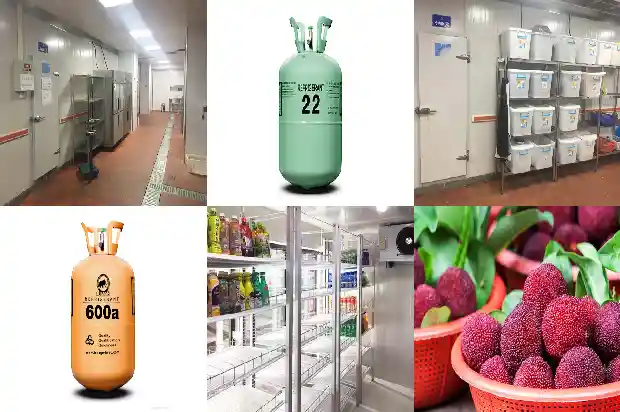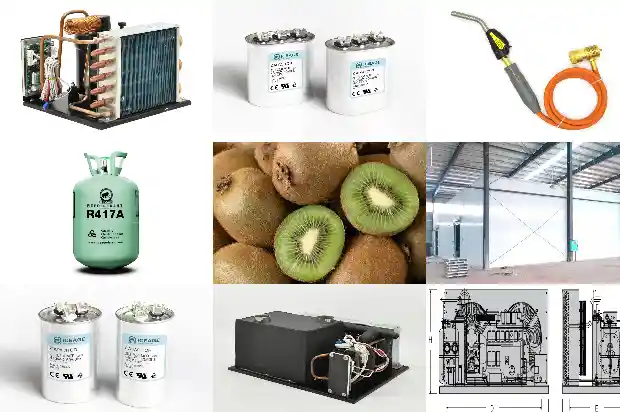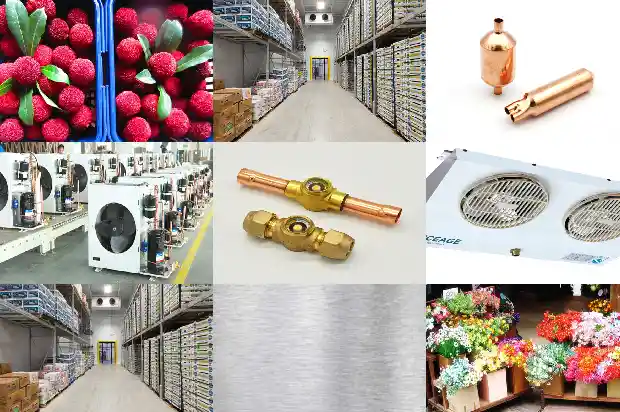Reasons and Hazards of Liquid Hammer in Refrigeration Compressors
2025-03-12
I. What is Liquid Hammer
Liquid hammer, simply put, is an accident where refrigerant liquid (or lubricating oil) is sucked into the compressor, causing a liquid hammer accident in the compressor. It refers to the situation where the refrigerant fails to absorb heat and evaporate completely, and the refrigerant liquid or wet vapor is sucked into the compressor by the compressor.
The main reasons for the damage of the compressor caused by liquid hammer are:
Liquid hammer, simply put, is an accident where refrigerant liquid (or lubricating oil) is sucked into the compressor, causing a liquid hammer accident in the compressor. It refers to the situation where the refrigerant fails to absorb heat and evaporate completely, and the refrigerant liquid or wet vapor is sucked into the compressor by the compressor.
The main reasons for the damage of the compressor caused by liquid hammer are:
- A large amount of refrigerant liquid enters the compressor at the moment of startup;
- The flow rate of the evaporator is insufficient (the throttling load decreases), and there is a liquid return phenomenon in the compressor;
- The defrosting of the unit during operation is not good, and a large amount of liquid refrigerant enters the compressor without evaporating;
- It is caused by the liquid in the evaporator entering the compressor at the moment of the reversing valve reversing.
II. What are the Effects of Liquid Hammer on the Compressor
- The Effects of Liquid Hammer on the Scroll Compressor:
1.1 Liquid hammer generates a huge impact force on the scroll plate, which may break the scroll plate.
The lubricating oil containing a large amount of liquid refrigerant has a low viscosity and cannot form an adequate oil film on the friction surface, resulting in the rapid wear of the internal moving parts of the compressor. In addition, the refrigerant in the lubricating oil will boil when it encounters heat during the transportation process, affecting the normal transportation of the lubricating oil.
- The Effects of Liquid Hammer on the Reciprocating Compressor:
2.1 The high pressure generated instantaneously by the liquid hammer of the reciprocating compressor is highly destructive and can cause damage to the compression force-bearing parts (such as valve plates, pistons, connecting rods, crankshafts, piston pins, etc.) in a very short time. It can be said that liquid hammer is a fatal killer of reciprocating compressors. - The Effects of Liquid Hammer on the Screw Compressor:
3.1 Can the screw compressor also experience liquid hammer? That's right. Many people think that the screw compressor will not experience liquid hammer, but that's not the case. It's just that compared with the above compressors, the screw compressor is less sensitive to liquid hammer. Liquid hammer in the screw compressor will cause vibration, increase noise, and damage the bearings; severe liquid hammer will also damage the equipment and cause accidents.
III. How to Effectively Prevent Liquid Hammer
- Reduce the Refrigerant Charge:
1.1 The best way to protect the compressor from failures caused by liquid refrigerant is to limit the refrigerant charge within the allowable range of the compressor. If this is not possible, the charge should be reduced as much as possible while ensuring the refrigeration effect. Be alert to the bubbles caused by the too-thin liquid pipe diameter and too-low head pressure in the sight glass. Reasonable refrigerant charging is crucial.
- Crankcase Heater:
2.1 The function of the crankcase heater is to keep the temperature of the refrigeration oil in the crankcase higher than the temperature at the suction inlet of the compressor in the system.
2.2 The crankcase heater is generally continuously heated during use. The crankcase heater is very effective in preventing migration. However, the crankcase heater cannot protect the compressor from the damage caused by liquid return, and the heater must be preheated for a long time before the compressor is started, which has limited operability in practical applications.
- Suction Line Gas-Liquid Separator:
3.1 Install a gas-liquid separator on the suction line to temporarily store the overflowing liquid refrigerant in the system and return the liquid refrigerant to the compressor at a rate that the compressor can withstand. Different refrigeration systems have different requirements for the total refrigerant charge, and the refrigerant control methods vary. Whether a gas-liquid separator is needed and what size of gas-liquid separator is required largely depend on the requirements of the specific system. - Suction Line Superheat Heater:
4.1 In the cold season, there is still a possibility of liquid carrying in the suction gas when the compressor is running. In this case, an electric heater or hot gas can be added to the suction line section of the compressor to assist in increasing the superheat of the suction gas of the compressor. This method is simple and effective. A superheat detection device can be added to make the control more accurate, thereby protecting the compressor and preventing liquid hammer.
4.2 In addition, during the design stage of the refrigeration system, controlling the opening degree of the throttling element and increasing the heat transfer area of the evaporator can effectively increase the superheat of the suction gas and reduce the occurrence of liquid hammer in the compressor during system operation. When charging the refrigerant, avoid charging in a liquid state from the low-pressure side to prevent the compressor from starting with liquid.
IV. Cases of Compressor Liquid Hammer
Case 1:
Case 1:
- Previously, the housing of a Daikin compressor of a QR - 120NW unit was damaged. After dissecting this compressor, it was found that the scroll plate of the scroll compressor had become fragments. When asking the installation company about the refrigerant replenishment during installation, the installation company replied that liquid refrigerant was added until the low-pressure value was above 4.5 kilograms when the unit was started and running. At that time, the outdoor temperature was around 22℃, and the current value of the compressor was not measured. Therefore, it was determined that the compressor was damaged by liquid hammer due to excessive refrigerant charging.
- Generally speaking, for new refrigeration units with a marked refrigerant charge, it is recommended to charge by weighing.
Case 2: - A freezer in Guangzhou had poor refrigeration effect. After being detected by on-site refrigeration personnel, it was determined that there was not enough refrigerant. Within less than 30 minutes after adding a large bottle of R22, the temperature dropped to - 18 degrees, but the suction valve of this semi-hermetic piston refrigeration compressor frosted rapidly. The on-site refrigeration personnel thought that the frosting of the suction valve of the freezer was normal and did not pay attention or observe it. They thought that as long as the temperature of the cold storage was normal, they could leave.
- Three days after operation, the cold storage stopped refrigerating again and was complained about by the customer. When arriving at the site, it was found that the compressor was already wrapped in thick ice, and the air switch tripped. When opening the inside of the compressor, it was found that the connecting rod and piston had been severely damaged. This accident was caused by excessive refrigerant charging in the cold storage! Although the frosting of the suction valve of the freezer is normal, it should also be observed to see if there is a trend of continuous frosting to the cylinder body. If it reaches the cylinder body, the cause should be identified.
Related Articles
- What are the Reasons and Hazards of Uneven Liquid Distribution in the Refrigeration System?
- Reasons for the Poor Refrigeration Effect of the Cold Storage
- Frosting in the Cold Storage? A Detailed Explanation of the 9 Reasons for Frosting of Air Coolers and 4 Defrosting Methods~~
- These Are the Nine Reasons for the Low-pressure Fault! Haven't You Mastered Them Yet?
- Is the Compressor of the Cold Storage Unit Overheating? Find the Reasons Here!
- A Detailed Analysis of the Nine Reasons for the Low Pressure in the Refrigeration System!
- Reasons for Compressor Oil Deterioration and Oil - adding Operations
- What Are the Common Reasons for Difficulties in Cooling a Cold Storage?
- Analysis of Seven Reasons for Ice Formation in Computer Room Air Conditioners
- Reasons for Frost Formation in Cold Storage and Defrosting Methods
- What Are the Reasons for Insufficient Air Output of Screw Air Compressors?
- Reasons for Pump Body Failures in Cold Storage Compressors
- What are the reasons for the inactivity of the automotive air conditioning compressor? What are the common faults?
- What are the reasons for the frequent start-up and tripping of the refrigerated air dryer in the cold storage?
- Reasons and Solutions for High and Low Condensing Pressure in Air-cooled and Water-cooled Systems
- 15 Reasons for Excessive Temperature Rise of Motors
- Reasons for Installing Thermal Insulation Layers in Cold Storages
- What are the reasons for the poor oil return of screw compressors?
